
The blossoms are about to bloom! The cherries! Everyone told me this. It was supposed to be today! they’d say, sad the trees weren’t cooperating. But I didn’t mind. I’m not too fussed about the cherry blossoms in general (I’ll enjoy them if I catch them, of course) but there’s something thrilling about the almost-bloom, the just-about-to-burstness of trees on the cusp of a mega-blossom. Everyone is waiting waiting waiting — a whole city holding its breath. All the trees along Yamaguchi City’s Ichi-no-saka River were like this: puffed up and pregnant with bloom desire, and I was happy to be there for this equally fleeting moment.

Here I was, back in Yamaguchi. It had placed #3 in the New York Times “52 Places to visit in 2024” list, and I felt it was (in part) my duty to help the city understand why it was placed there, and try to help them extract as much forward-facing goodness as is possible from this unexpected moment. 1
I wanted to come earlier in the year, but I simply couldn’t. I spent most of January recovering from my harrowing MRSA arm infection. And then I’ve been on deadline to deliver a finished draft of the Random House edition of Things Become Other Things (pub date: Spring 2025). Finally — FINALLY — I felt I had enough bandwidth and stamina to swing by Yamaguchi at the end of March and power through the media gauntlet, which is precisely what I did last week.

I met with the mayor of Yamaguchi City and the governor of Yamaguchi Prefecture. The mayor and I met in the beautiful Saikotei — a luxurious “ryotei” restaurant that ran from 1878 to 1996 (!), and then was reopened in 2004 as a reception hall for the city and museum. It’s a stunning piece of Meiji-era architecture, and features an impressive collection of calligraphy from the many prime ministers (Yamaguchi has produced more prime ministers than any other prefecture) who have visited the building over its storied history. Mayor Ito Kazuki was gracious and affable. 2 It was a true pleasure to chat with him about the potential of cities like Yamaguchi in front of some 30 journalists and television reporters.
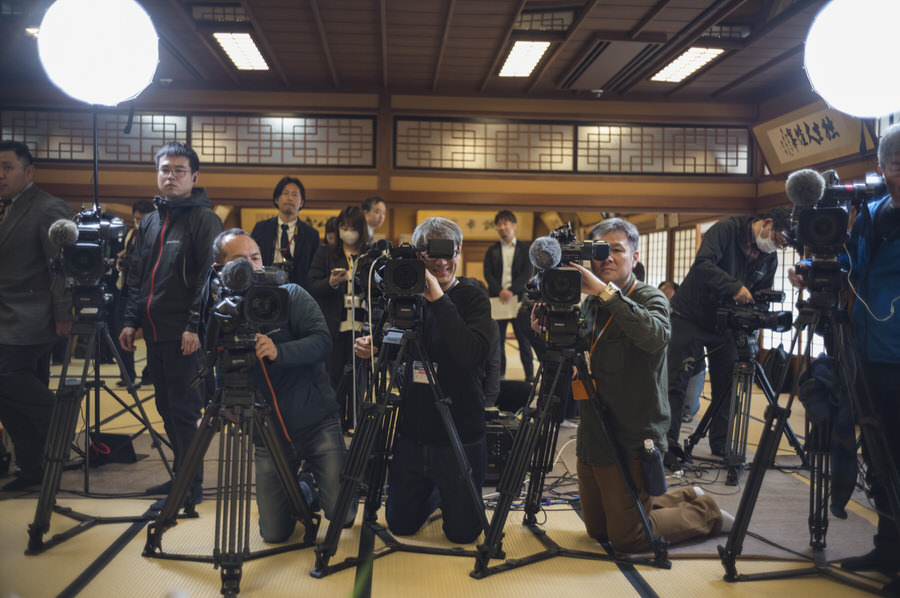
From there I was whisked away to the old prefectural offices and diet buildings — two structures in perfect contrast with Saikotei, buildings finished in 1916, incredible Taisho-era specimens. Designed by Goichi Takeda and Yoshikuni Okuma who later would design the iconic National Diet in Tokyo. You can “see” the architects working out their visual language and proportions here in Yamaguchi. The former governor’s office is preserved in its original state, and it was in that stately room — high-ceilinged, broad-windowed with flowing curtains, complex dark-wood trim — Governor Muraoka Tsugumasa and I chatted, once again, before an impressive mass-media collective, about the potential of regional cities and prefectures outside the standard tourist corridors (Kyoto, Hiroshima, Tokyo, Hakuba, etc.).

Upon returning to Yamaguchi (I hadn’t been back since December 2021, during my Tiny Barber tour of Japan), I was relieved to still feel what I felt the first two times I visited, and which made me want to recommend Yamaguchi to the Times. An entanglement of these five general qualities:
- Walkability: It is eminently walkable, especially the central areas around the large shotengai shopping street, following the Ichi-no-saka River, up to Rurikoji, Gojūnotō, and beyond to Jyoei-ji Temple.
- Small-shop activity: The vibrancy of young entrepreneurial activity continues to flourish (two of the one-on-one interviews I took were from folks in their 20s working for local media); I was invited to an evening temple party and everyone there seemed to be in their 20s or 30s or 40s, running breweries or turning love hotels into “normal” hotels or running flower shops or cafés or cultural troops supporting historical Kyōgen dance and performance.
- A strong connection to nature: I arrived around dusk during a torrential downpour, and it was, quite frankly, a perfect arrival to this valley city — the faint glow of the last of the day’s light behind the walls of mountains framing it all, mist moving quickly between peaks. And then on the sunny days that followed — that strangely comforting sense of having a range of mountains always in view, always close, no matter where you walked in the city. And the great Hagi-Ōkan is of course, at the city’s doorstep.
- Historical resonance: Present both in the venues for my two political meetings, but also everywhere else. You feel the city’s history in the shape of its streets, the cultural markers dotting the city around every corner. Places like Jyoei-ji are amazing design artifacts writ in the language of temples and gardens. In the back of Jyoei-ji is a garden designed by Sesshū (1400s). And in the front, one by Shigemori Mirei (1900s). Gardens split across a temporal gap of some five-hundred years. The city occupies a pivotal place in the Bakumatsu-era of modernization, and its political influence has continued well through the 20th century. (There is a lot for history buffs to unpack here.)
- An off-the-beaten-trackness: It makes no sense to recommend a place already well known, well-trodden. Despite clocking in at #3 on the list this year, Yamaguchi still felt overwhelmingly hidden and protected. I took the Shinkansen from Tokyo and nearly everyone got off at Kyoto or Osaka. By the time we arrived at Shin-Yamaguchi, the train was nearly empty.
So I encourage you: Visit! 3 I don’t expect the city to ever be crushed by over-tourism (this is one of the reasons I recommended it; it’s slight-distant position acts as a natural buffer — only folks who really want to go will go, and those are the folks any city should welcome, folks curious and hungry and kind and patient), but now’s as good a time as any to add Yamaguchi onto a trip that has stops in Hiroshima or Fukuoka. And if you have more time, continue on up to the beloved Hagi, rent a car and explore the rugged coast abutting the Sea of Japan, swing by Akiyoshidai National Park; take in more of the central delights of Yamaguchi Prefecture at large.

For visits to Yamaguchi City, consider staying at the historic Sansuien, a refined hot spring ryokan plopped between Yuda Onsen and Yamaguchi City. Or maybe Matsudaya, another historic inn (300+ years), just a few blocks south of there. If you’re on a budget, the Route Inn is totally serviceable (it’s where I always stay!), conveniently located, and has a huge bath, sauna, and rotenburo on its first floor, all fed by hot spring water. All these inns are walkable to Yamaguchi’s main attractions.
If you’re looking for a bit of adventure, consider staying at Koukasha, a tiny, gorgeously appointed inn / B&B up in the northern edge of the Yamaguchi City valley. It’s a bit more of a hike out of town, but it was recommended to me with such fervent passion, I’ll be booking a night on my next trip.
In a previous Ridgeline about Yamaguchi I wrote:
Good life is possible here, full life, on a human scale, operating within the bounds of a warm community, feeling your own small contributions meaningfully add up in the lives of people around you. When I travel I’m not looking for the most delicious bowl of ramen or the perfect croissant or the most famous local bite, but rather archetypes of ways of living that set my imagination ablaze, that make me grateful to have encountered those people, and grateful for the social and political infrastructure that exists, allowing those I meet to live in their own, additive ways.

My first stop in Yamaguchi was Churamu, the little kissa I’ve mentioned before. My plan was a quick meal, but I ended up staying for two hours. Talking with the owner — a tiny “Mama” — as Makoto Ozone’s “The Night Has a Thousand Eyes” played over the speakers.
The Mama came over to me and gave me a seat cushion saying, “so your tush doesn’t get cold.” This year marked Churamu’s 40th anniversary. Mama started Churamu with her cousin. It was his idea to turn the family vegetable field into a kissa — but one that was wheelchair friendly. As soon as she mentioned this, it was apparent how, indeed, the shop’s aisles and toilet and entrance were wheel-chair sized. This struck me as incredible a thing — to have had this accessibility insight and compassion 40 years ago.
I ordered the chicken katsu curry and it was divine — crispy and light, atop a bed of rice and a sea of curry that felt nourishing straight to the bones. It came with an impressively dense and delicious salad. And a delicate cup of coffee.

Mama and I talked and talked. I learned about the big painting on the wall, how it was the work of a local artist (acquired 40 years ago), someone who is still alive and now lives in Tokyo. I chided that maybe Churamu should think about raising prices — they hadn’t raised them in some 30 years. But the menu was hand-drawn, the text composed of coffee beans, the original menu huge. The one on the table a shrunken reproduction. Changing prices was no small undertaking.


The owner was pathologically against having her photo taken, so I didn’t push it, but boy I wish I had a photo for you. Hiding back in the kitchen, she sneakily called her friends up on the phone and told them the “New York Times guy” was here. The place began to bustle. Questions came flying. By chance, a woman — Masako Fuji — sitting at an adjacent table was from the tourism bureau. She had learned about Churamu from my Ridgeline issue back in January, she said. We talked about how a city like Yamaguchi can (and should!) team up with other cities of similar ilk, create tours and information exchanges with places like, for example, Onomichi, over in Hiroshima Prefecture. Not too far away. With the audacious tourism goals of the Japanese government (60 million visitors (double present numbers) by 2030), this is not a zero-sum game. The pie is gargantuan, and anything to pull tourists out of the black-hole orbit of cities like Kyoto and Tokyo is a win. 4
The mayor and governor both asked me how I thought Yamaguchi should change going forward. And I implored that I didn’t think it was about change, but rather about sustainability and ensuring that the social and political infrastructure that allows for cities like Yamaguchi to thrive as they are, is maintained. That’s what was important. Not about twisting or bending explicitly for the benefit of tourists. One of many so-called “soft powers” of Japan is providing an archetype of sanity of governance and life to the many global visitors who do not witness such sanity back home.
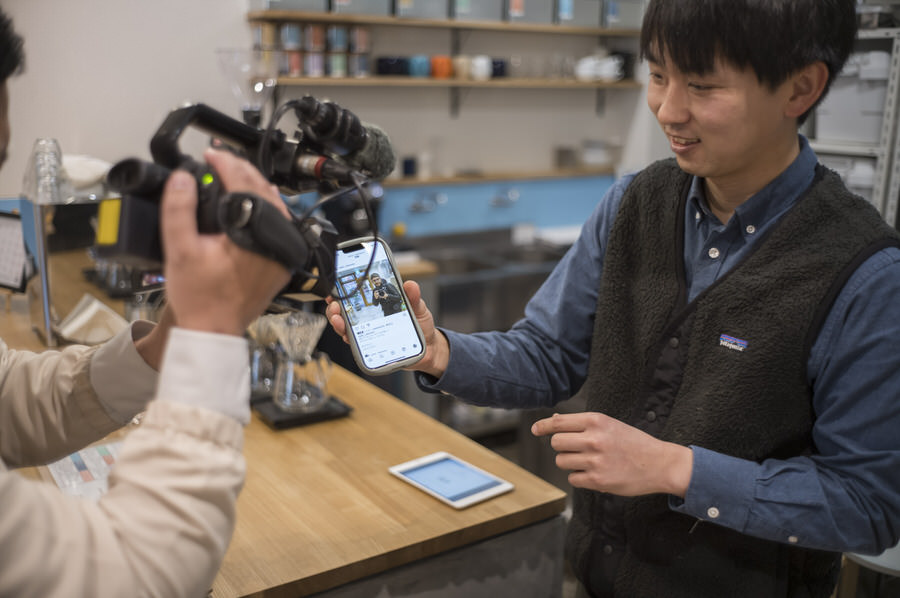
My schedule was packed to the gills with media events, but I tried my best to sneak in a walk around town in my scant downtime. I stopped by Log Coffee and said hello to the owner who seemed as lively and excited about coffee and community as ever.
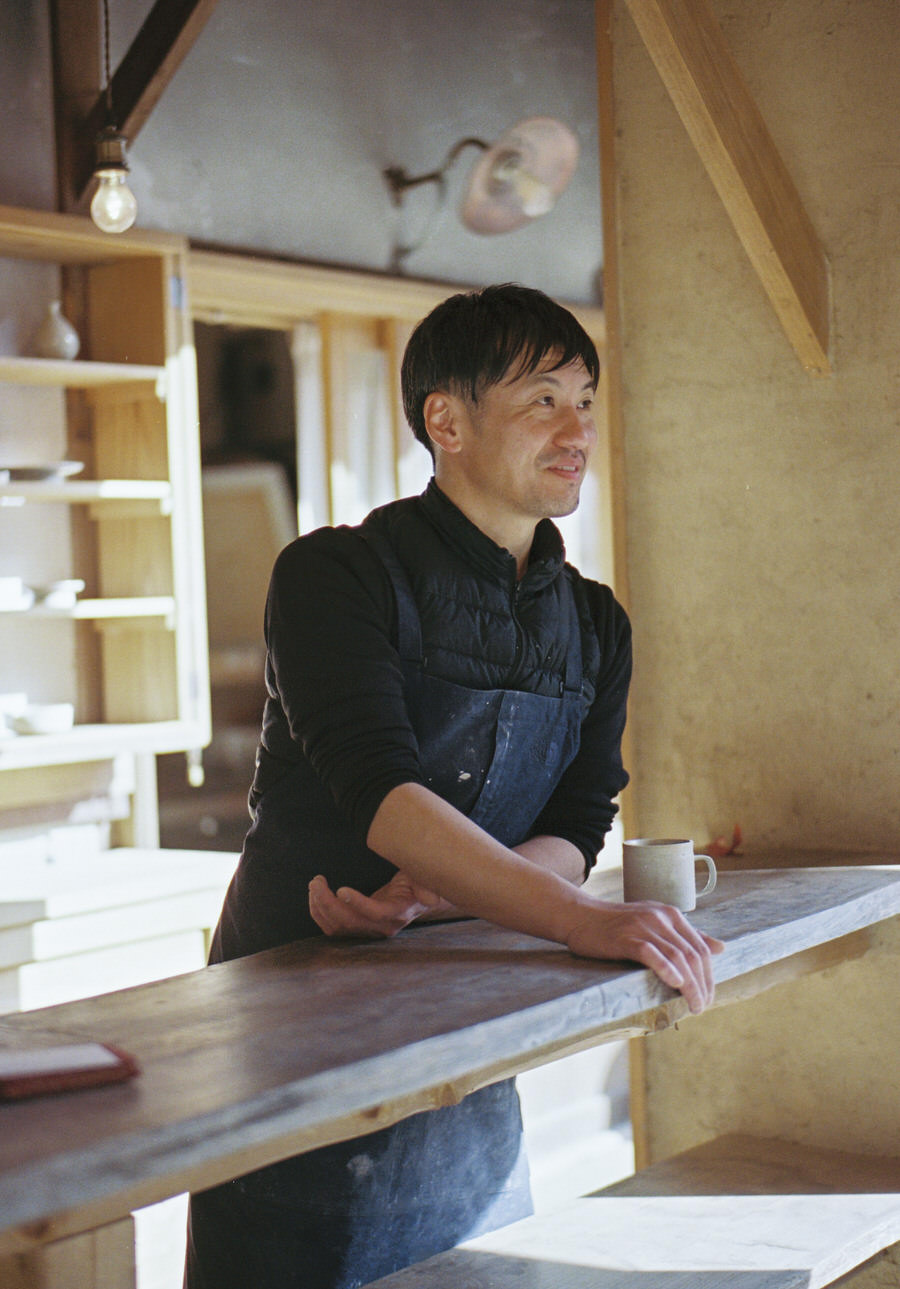
Of course I stopped by Mizu-no-ue Kiln, and hung out with Gakuji. He told me that “they” — the temple, Toshun-ji — had recently acquired a horse. Where? Up there, he said, pointing to the bamboo grove behind the temple. We went to peek — the horse was being cared for by a German woman named Simona, about 25 years old, who moved over from Western Germany for a year as a volunteer to take care of the horse. What a job! The horse was named Charme and was the same age. Boy did it love carrots. Simona was living in the temple and her days sounded as idyllic as anything I’ve ever heard.
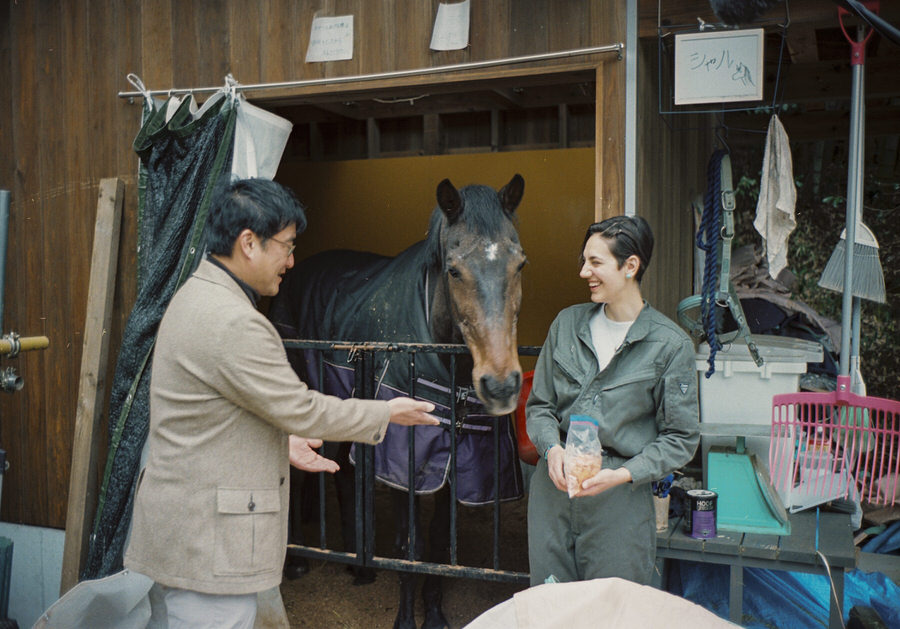
I had dinner with Fukano-san, Toshun-ji’s temple head, the jūshoku, and heard about his philosophy of community involvement, using the temple space as an invitation for locals to gather. Toshun-ji houses an orphanage (you walk past it on the way in, modernism, poured concrete, impressive), and so Charme’s role was not just to be a horse, but be a beacon of joy for the kids. As was the goat and dog, Maru. As was the great treehouse made of bamboo that towered above it all on my last trip (but has since been taken down). I’m now convinced all temples should have a community horse.

No matter how historic or beautiful a city is, no matter how beautiful their gardens might be or how mineral-rich their onsen waters, the authenticity of experiencing the place lies wholly in the people of that place. And for all of my many interactions with many folks around Yamaguchi, I can continue to say: There is an openness and kindness to everyone I’ve met in Yamaguchi that continues to inspire me, and elevates all the other fabulous qualities of the city.
This word “authenticity” is often bandied about without concrete definition. Here’s what I’ve settled on: A quiet, turning towards, and engagement with, the culture and people of a place. An “authentic” experience can happen anywhere, but it can be difficult to experience in a chaotic environment. You can have an authentic visit to Fushimi Inari in Kyoto, but perhaps only at the earliest hours of the morning, before the throngs of tourists descend and make actually looking — closely and quietly and with a kind and elastic compassion — nearly impossible.
The Gojūnotō Pagoda is presently covered for renovation (oh, the irony, the timing!) but it makes for an incredible opportunity to look at everything around the pagoda, everything that’s missed when it’s normally open and all attention is on the ancient wooden structure. There’s a quiet to it all, today, that makes it easier than ever to witness life being lived in Yamaguchi, to have an “authentic” experience with the city itself, the neighborhood just in front of the pagoda. (And at night, the pagoda is lit up in a fabulous way.)
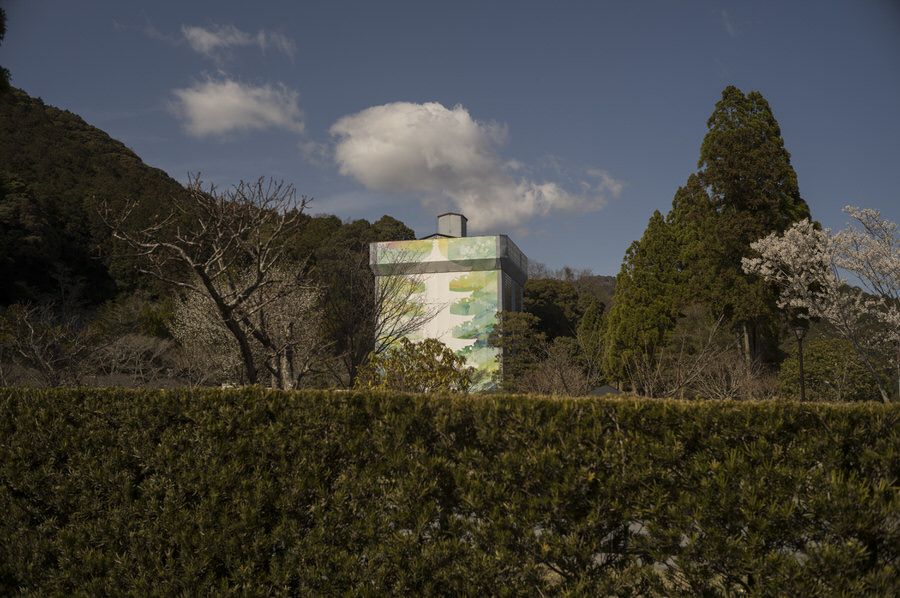
The trip last week was far too harried, I was far too busy. I need to go back, settle into one of those hot spring inns for a few days, and once again walk the streets of Yamaguchi without agenda. I just hope my rambling interviews, my ham-handed, tongue-tied explanations of why I adore the city — why I recommended it to the Times — makes some kind of sense to the people of Yamaguchi. And it’s my hope they can take the energy from this moment and invest further in the social and physical infrastructure that makes the city great, and will continue to make it great for generations to come.
When I finally did leave Churamu, Mama popped outside with me to wave goodbye. All around, the blossoms seemed to be screaming with bloom desire. I walked fifty, a hundred meters down the road. Peeked behind — she was still there, waving. Perhaps now, I thought, I can sneak in a photo, just for me, just to remember. I pulled out my phone, tapped the zoom lens, stopped and turned around. Mama was barely a speck in the distance, but as soon as she saw me raise my phone she knew — with an almost supernatural intuition and reflex — what was happening. Like a Himalayan snow leopard, she dove back into her shop, un-photographable, utterly lovable, back to serving up perfect curry and coffee, a community hub, accessible for four decades, an exceptional human living admirably in a beautiful valley city, deep in the west of Japan.
Noted
-
I.e., How can you leverage this media interest to upgrade local infrastructure (getting local taxi companies on the Go Taxi app for example), secure funding from the prefecture for city-wide upgrades and more. ↩︎
-
We met in an adjacent building before the media event and drank tea and chatted, which was an appreciated gesture. These media events are a bit traumatizing, and this was the first time a politician sat down with me beforehand. Thank you, Ito-san! ↩︎
-
For the record (and maybe it’s graceless to even bring this up), but I don’t get paid for any of this. The city and prefecture offered to cover the cost of my trip and hotels, but I declined. I always decline. This entire trip was paid for out of pocket (about $1,000 USD; trains, hotels, food, lifeforce). These kinds of trips, activities, and the Tiny Barber research that led to my NYTimes suggestion, are almost entirely funded by my SPECIAL PROJECTS membership program. Thank you to all the members who allow this work to happen. (For some of the one-on-one media interviews, they pay a standard “interview” fee, which I do accept (mainly to “establish” this as my work on the ledger of tax authorities). But in aggregate it is a very small amount of money.) ↩︎
-
It would be interesting to set up a coalition of mid-sized cities; a kind of touristic UN. A fellowship, if you will. Mid-sized cities sit in my mind as the “startups” of cities — more nimble and flexible than the megalopolises. But with enough resources to really do things. And to be able to do those interesting things more easily. As I write above, the tourism pie is so large, that the visitor “competitors” to mid-sized cities are not other mid-sized cities, but rather Kyoto and Tokyo. ↩︎
